We are now well into the routine of waking early, enjoying a hearty Japanese breakfast (that always includes steamed rice, miso soup, pickled vegetables, tea and tofu), then checking out of our accommodation. When camping there is supposed to be a mantra of ‘6:7:8’, which means up at 6:00, breakfast at 7:00 and on the road by 8:00am. We have rarely kept to that when camping, however it is quite do-able as we travel around Japan.
Following breakfast, we had some time to continuing exploring the Koyasan township before the bus we needed to catch departed at 10:34am. It was unanimous that we would return to the cemetery where we had been the previous evening to see what it was like in daylight.
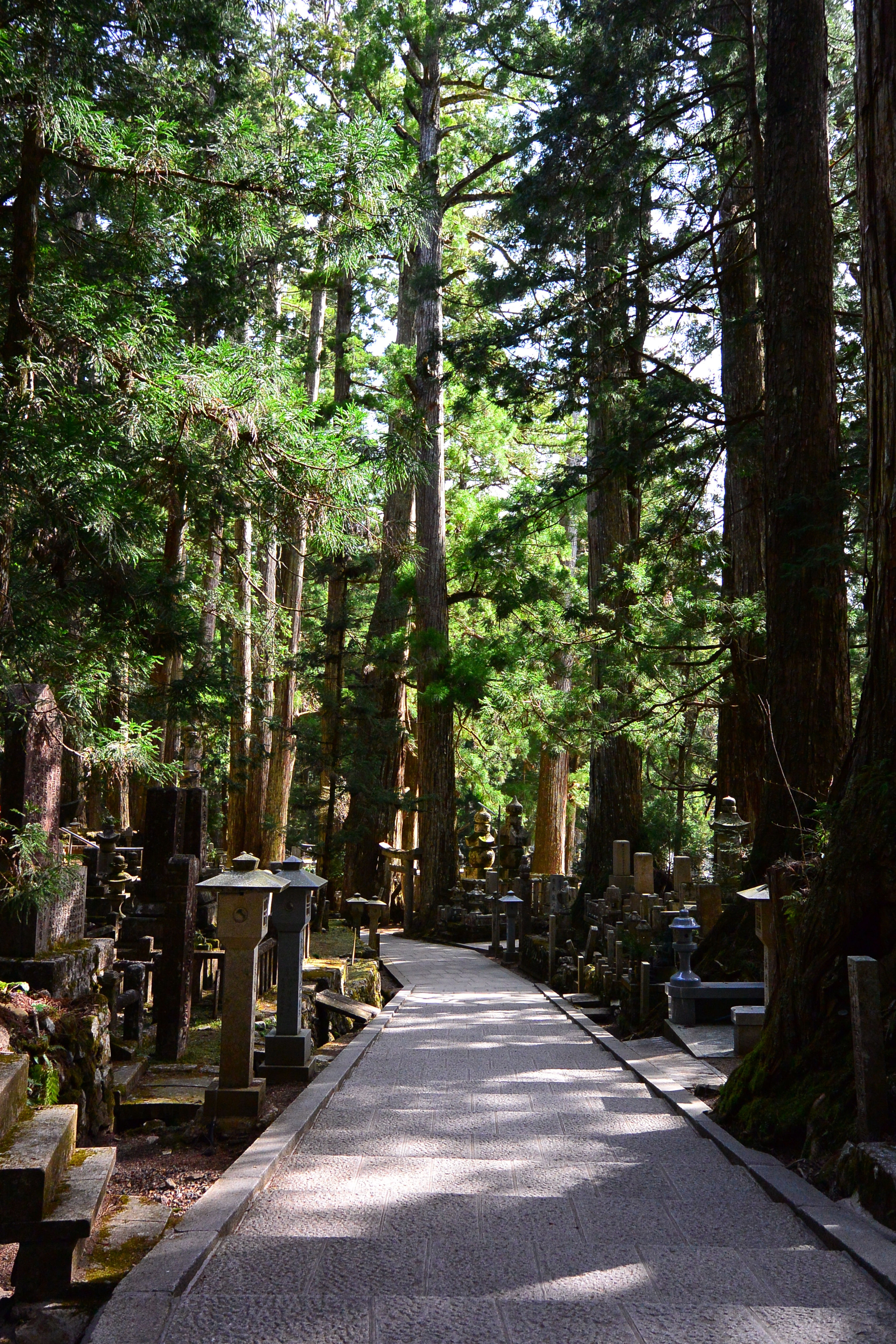
The cemetery really sets itself apart by being situated in an ancient cedar forest. The trees are between 200 and 600 years old and most are designated National Treasures of Japan; they are all individually recorded and protected under this listing. Even though it was relatively early and quite cold, tour groups were already gathering at the entrance to the cemetery. We noted that they were largely German- or French-speaking groups.
One feature of the cemetery that was pointed out on the tour last night was a small temple beside a well. The story goes that if you look into the well and cannot see your reflection you have less than 3 years to live; conversely if you can see your reflection you have more than three years left in you. Our guide last night recommended we wait until daylight to check our future by looking into the well – probably a wise move in the darkness of the evening. We were willing to learn our fate, and took it in turns to see if we needed to pack as much as we could into the next three years or we’d better pace ourselves as we move towards our dotage. It’s safe to say that the boys and their families will not be benefitting from any inheritance in the next three years.
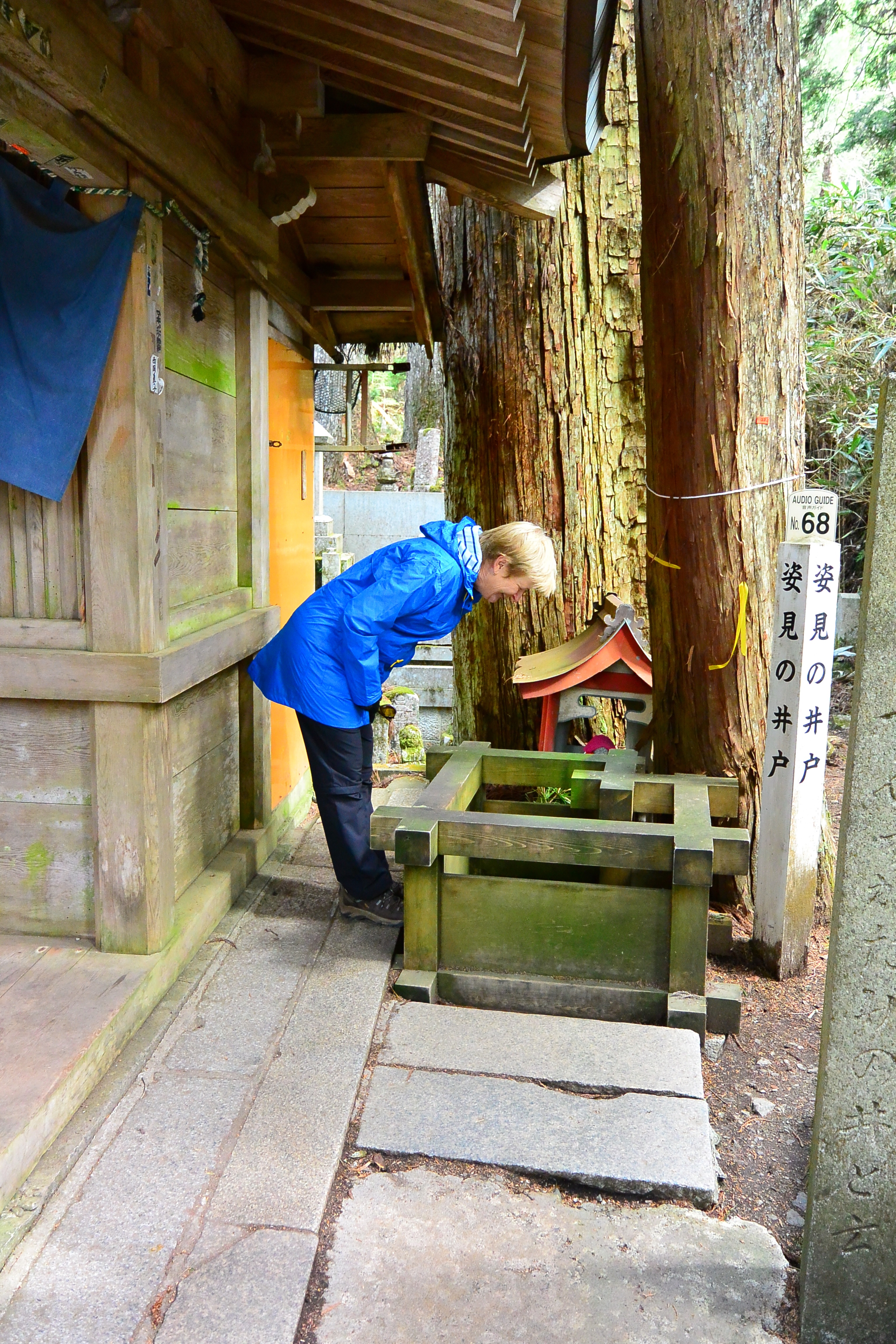
Our walk through the cemetery continued until it was time to turn around and commence our journey to Nakatsugawa. We stopped briefly at reception in the Eko-in temple lodging to reclaim our backpacks, then wandered up town to join other travellers waiting for the bus to take us to the start of the “train” trip north. The first leg was actually back on the near-vertical cable car (funicular) for the ride down the side of the mountain to a more conventional train waiting at the station for our arrival.
The next train also had to negotiate a steep descent and multiple tunnels, on a single track line that widened to dual lines at each of the stations along the way. This allowed for trains travelling in opposite directions to pass without fuss provided both were running to schedule. At the bottom of the descent we changed trains again, this time to a typical suburban line that would take us in towards Osaka – where we changed yet again to the JR line for a short trip across town to connect with a Shinkansen bound for Tokyo but stopping at Nagoya, where we got off.
Our final train then took us north from Nagoya to Nakatsugawa in Gifu Prefecture, where we are staying the night in another ryokan perched on a hill overlooking the township and set in beautiful, well-tended gardens that are beginning to burst into life after what must have been a cold winter.
Our accommodation is in one of the old buildings set in the gardens. By old, we mean really old – oozing charm and character but with little evidence of insulation. The two main rooms have heating, and the futons in the bedroom are covered with generous doonas that should do the trick. Following a pot of tea in the living area, complete with western chairs and table (for those with limbs unaccustomed to sitting on the floor for any extended duration), we explored the gardens and acquainted ourselves with the facilities. The traditional bath house is through the gardens, and the signs on the doors suggest always checking to be sure which is for ladies and which is for men as they are swapped on a daily basis.
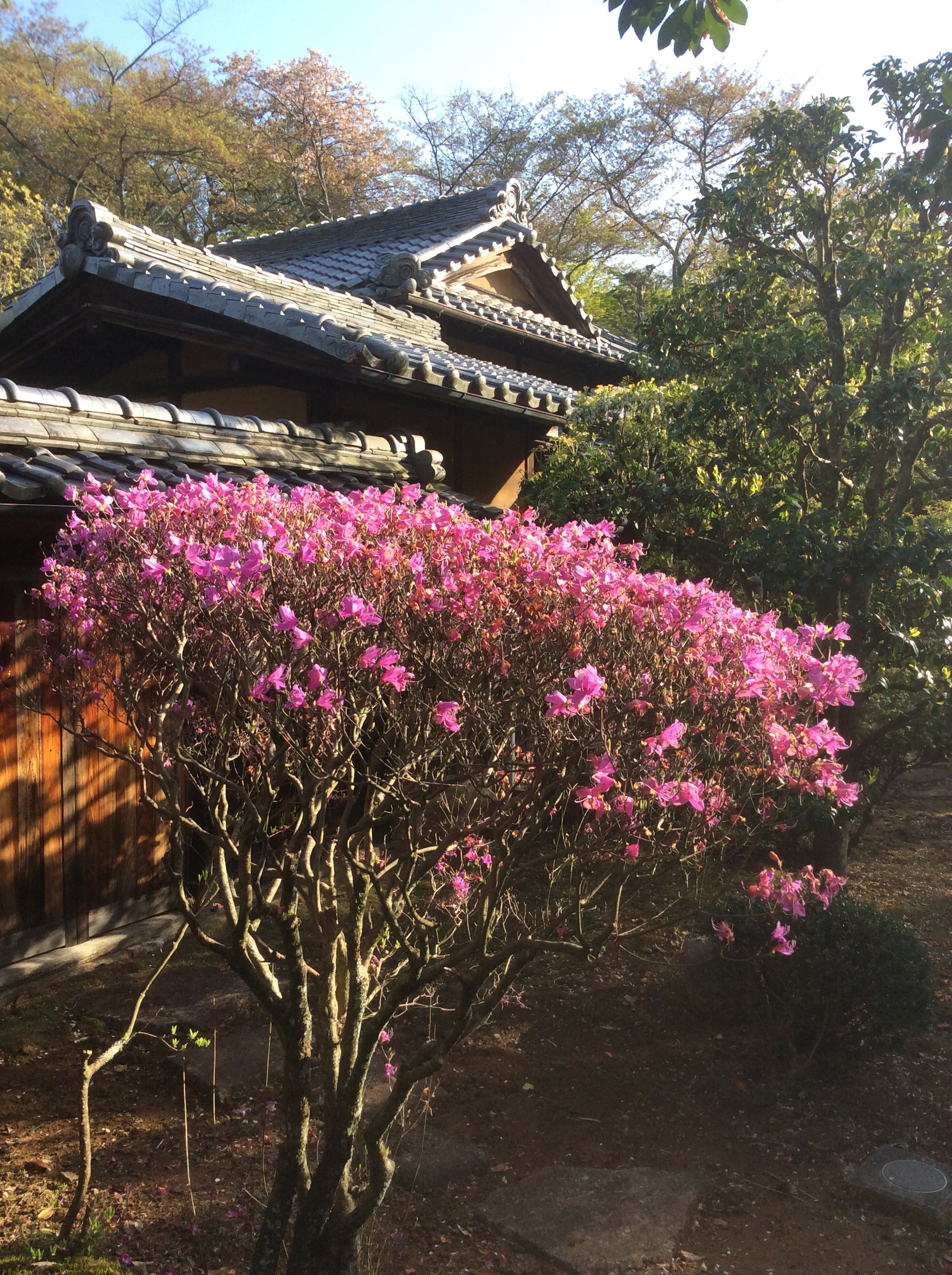
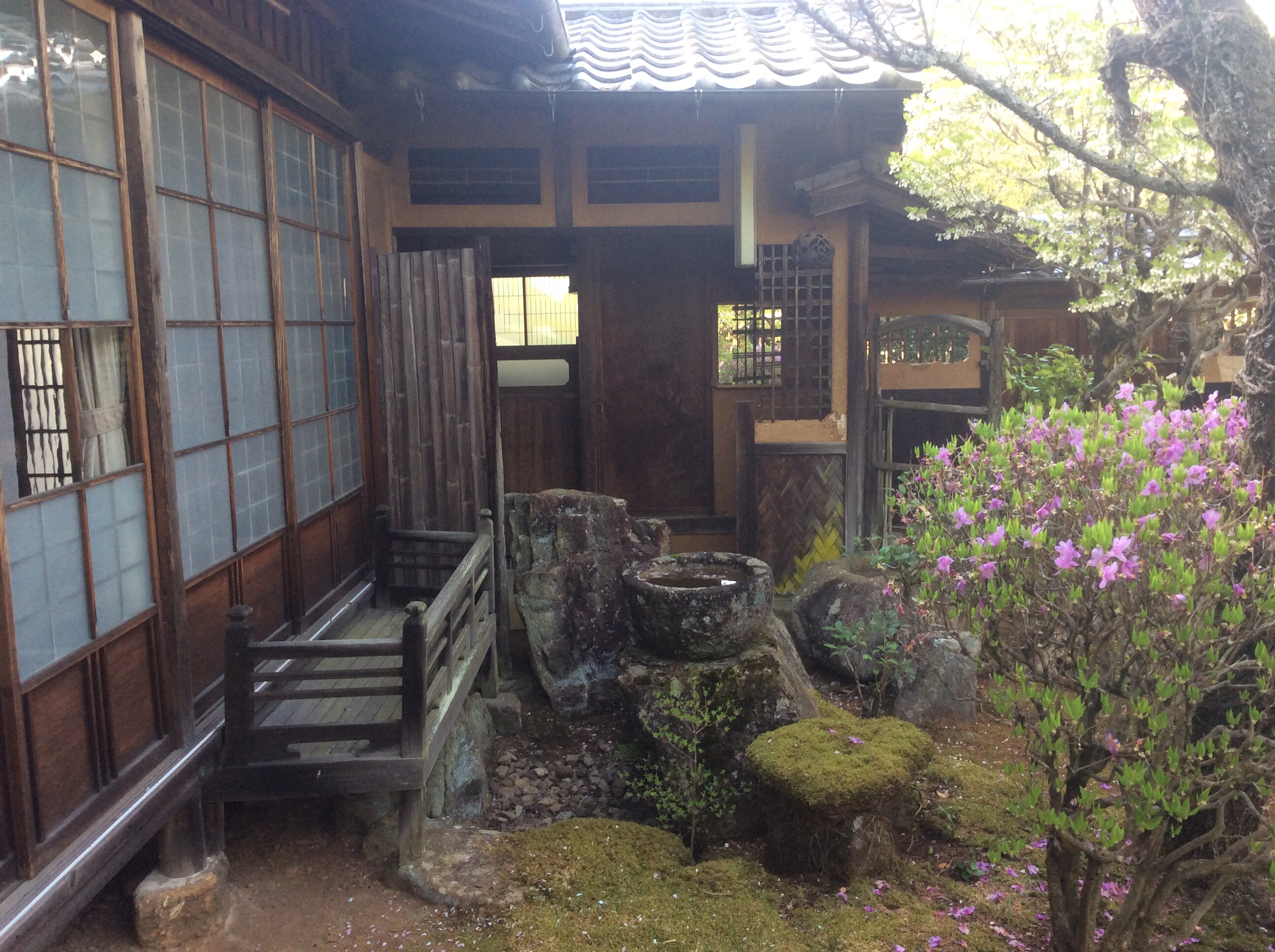
Dinner started being served at 6.00 pm and an hour later we are still going. A variety of small, bite-sized dishes have come through during the sitting, all beautifully presented, subtle in flavours and a delight to eat.

Note the carrot, which has been hand carved into the shape of a butterfly.
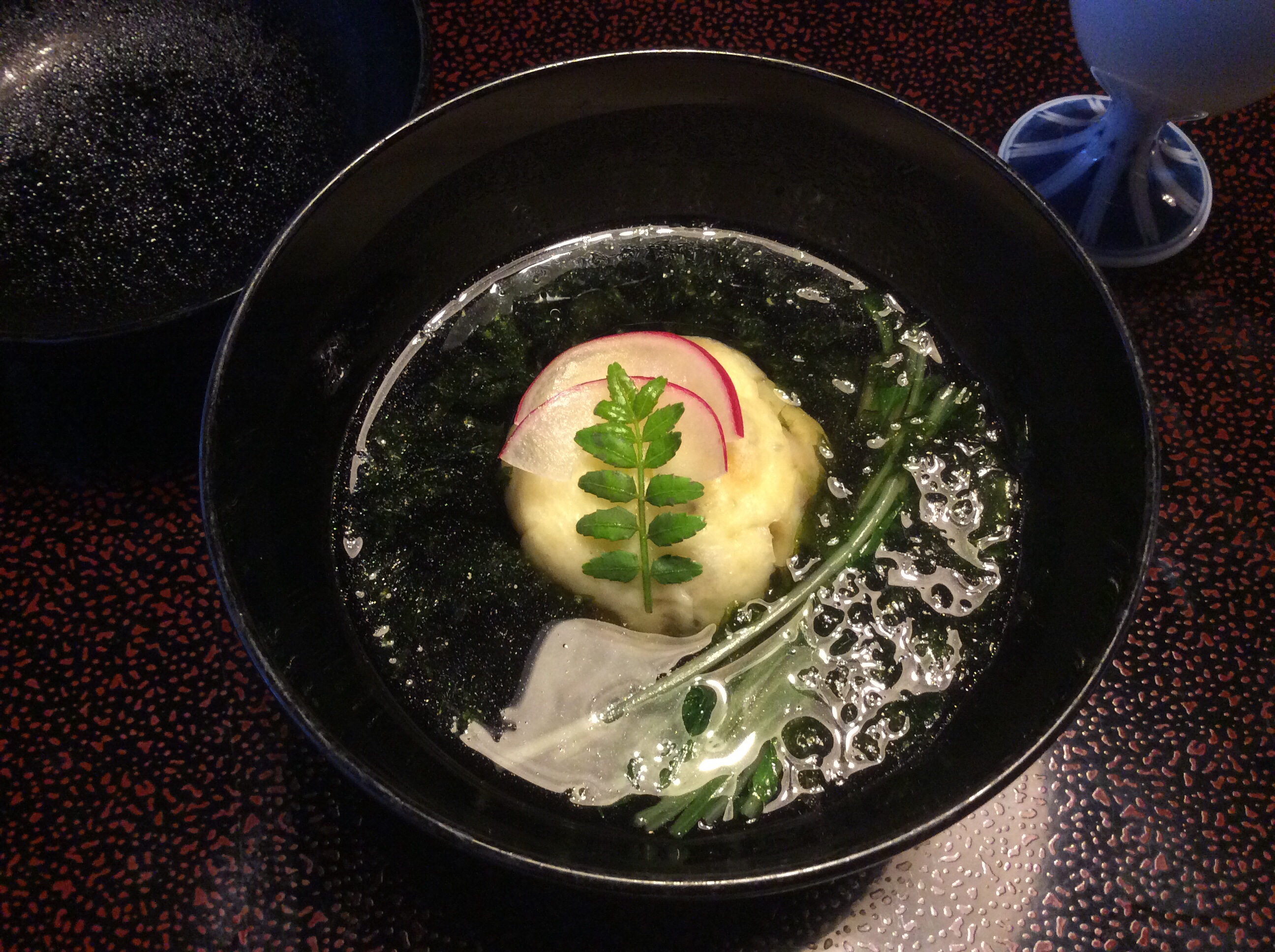
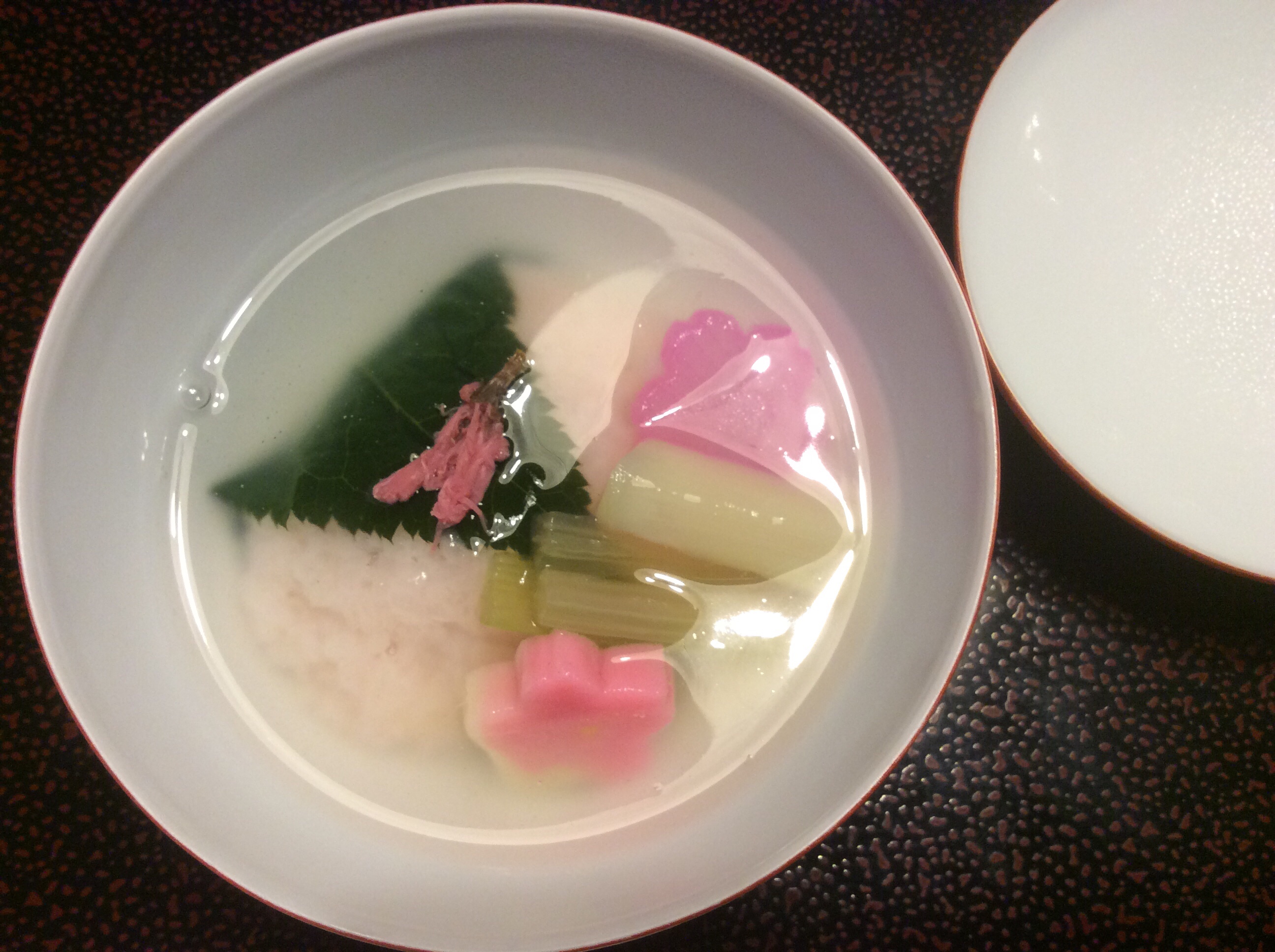
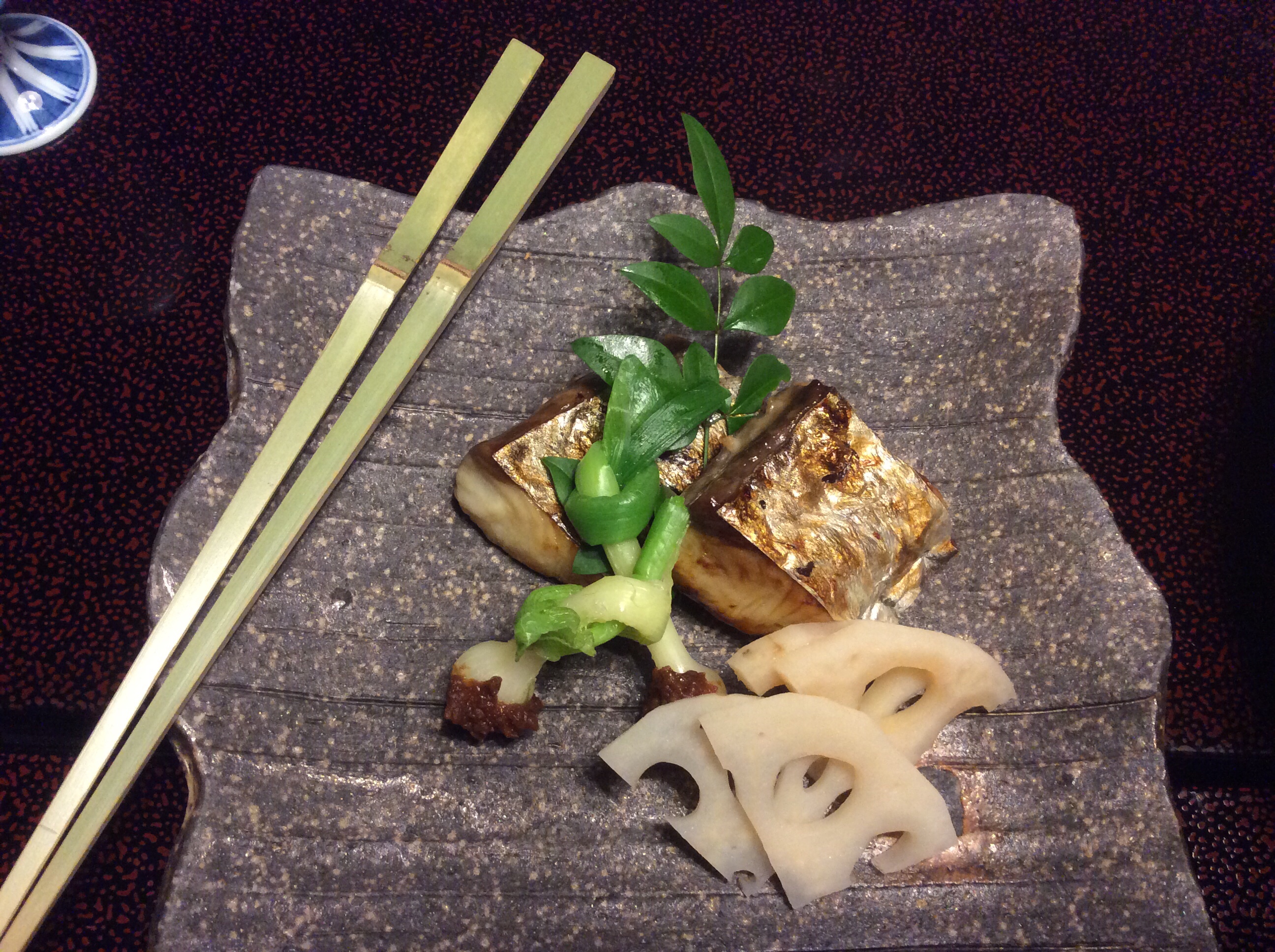
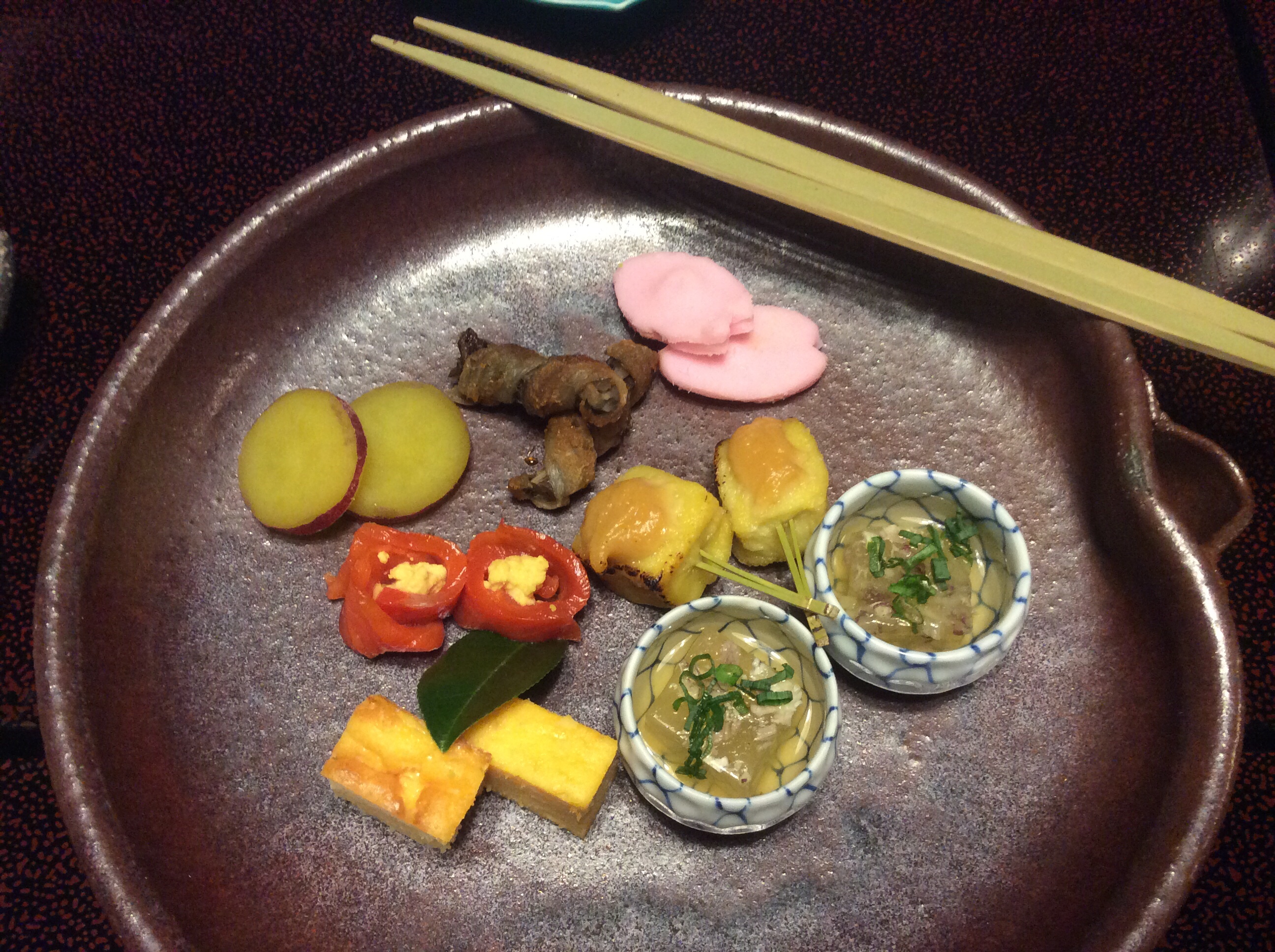
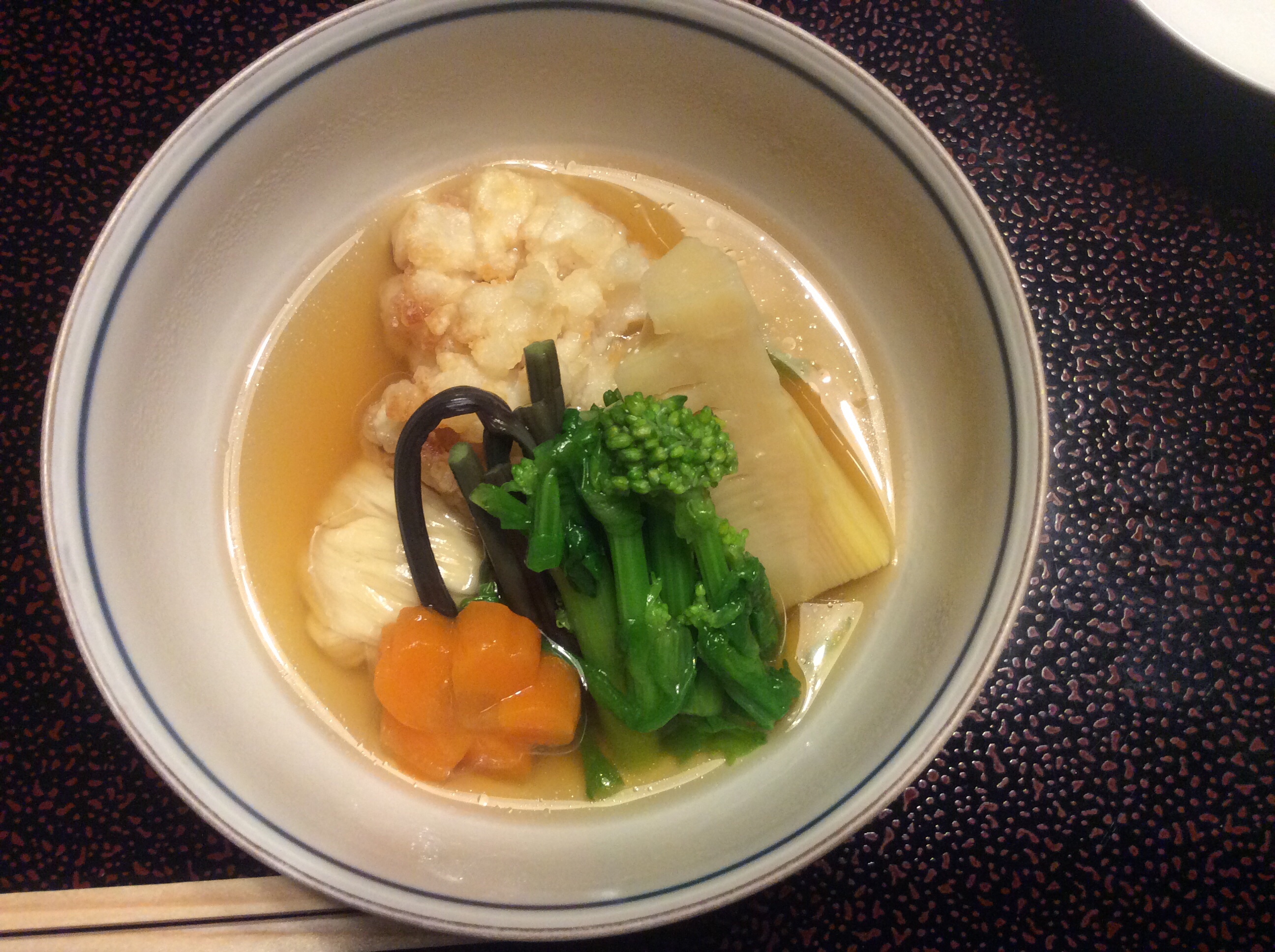
The dishes kept coming and we kept eating everything that was served up, much to the delight of our hostess and apparently also to that of the chef.
Tomorrow we set off to walk a small portion of the Nakasendo Way, an historic road that was once an official route for the Shogun.
